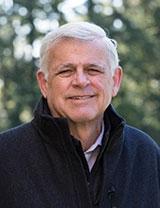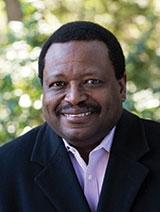Robert Sedgewick introduces students to the power and potential of computing. Simon Gikandi reexamines the influence that the historical interchange between Europe and Africa had on language and culture. Naomi Ehrich Leonard ’85 designs dynamics for robots inspired by the collective motion found in nature, from flocks of birds to schools of fish.
These teacher-scholars, who break new ground in their fields, are among a select faculty group recognized with the highest academic honor Princeton can bestow—named professorships. Their endowed chairs were created through bequests by forward-thinking alumni and friends. Here is a glimpse of the impact they have on scholarship:

Robert Sedgewick holds the William O. Baker *39 Professorship in Computer Science, established through a bequest by Stephen Condit, a friend of the University, in honor of Baker, a University trustee (Read story).
Sedgewick, the founder of Princeton’s computer science department, has revamped “General Computer Science”—which enrolls more than 750 students a year—to increase participation by having students watch lectures online, at their own pace, on their own schedule. Lecture time is devoted to interactive class meetings; precepts are focused on students’ questions. Sedgewick e-mails new assignments each week. His contact with students has increased, he says, through e-mails, class meetings, and office-hour consultations.
“Before when I delivered a big lecture I was just trying to get through the lecture,” Sedgewick says. “Now I feel the course is more personal and student-driven because of the interaction.” An early adopter of the online education platform Coursera, Sedgewick’s three massive open online courses, called MOOCs, have reached more than 1 million students globally since 2012.

Simon Gikandi holds the Robert Schirmer Professorship of English, established through the bequest of Robert Schirmer ’21.
Theories about globalization and the emerging modern world are often considered solely from a European standpoint, but Gikandi’s scholarship rejects that notion. He explores the global dimension of English and how it traveled and evolved from postcolonial Britain to Africa, India, and the Caribbean. He also draws connections to how trade practices, including the slave trade, entered the European world of drawing room manners and influenced ideas on freedom and empire.
“In my early work, I tried to understand how European categories such as literature and culture were transported and translated to the colonial world,” he says. “My more recent work sets out to establish alternative genealogies for the theories and practices of modernity. . . . In my work as a whole, I seek to establish historical and conceptual connections between the events taking place in, let’s say, Amsterdam in the 17th century and at Cape Coast, Ghana, at about the same time.”

Naomi Ehrich Leonard ’85 holds the Edwin S. Wilsey Professorship of Mechanical and Aerospace Engineering, established from the bequest of Edwin S. Wilsey ’1904.
Leonard interweaves control theory, fluid mechanics, robotics, computer science, oceanography, and biology in her research. She was among the first to investigate the simple rules that enable individual agents— whether living organisms or robotic vehicles—to work together in groups by coordinating decisionmaking, sensing, and motion. A current project uses models of animal group dynamics to inform how to best direct mobile sensor networks to observe wildlife. “Researchers from different disciplines ask different kinds of questions about the same topics, and it is often listening to and responding to these that lead to innovative research,” Leonard says. “My work involves abstracting out from concrete problems to develop approaches and methodology for designs that are generalizable, so it is ripe for making connections between seemingly unconnected disciplines.”
Leonard, who has collaborated on dance projects with the Lewis Center for the Arts faculty, teaches “Transformations in Engineering and the Arts” with four colleagues. In one assignment, students are challenged to compose a movement piece inspired in part by how animals coordinate in flocks and herds. The students use realtime feedback to create rules for how participants will react to light, sound, and one another’s movements.


